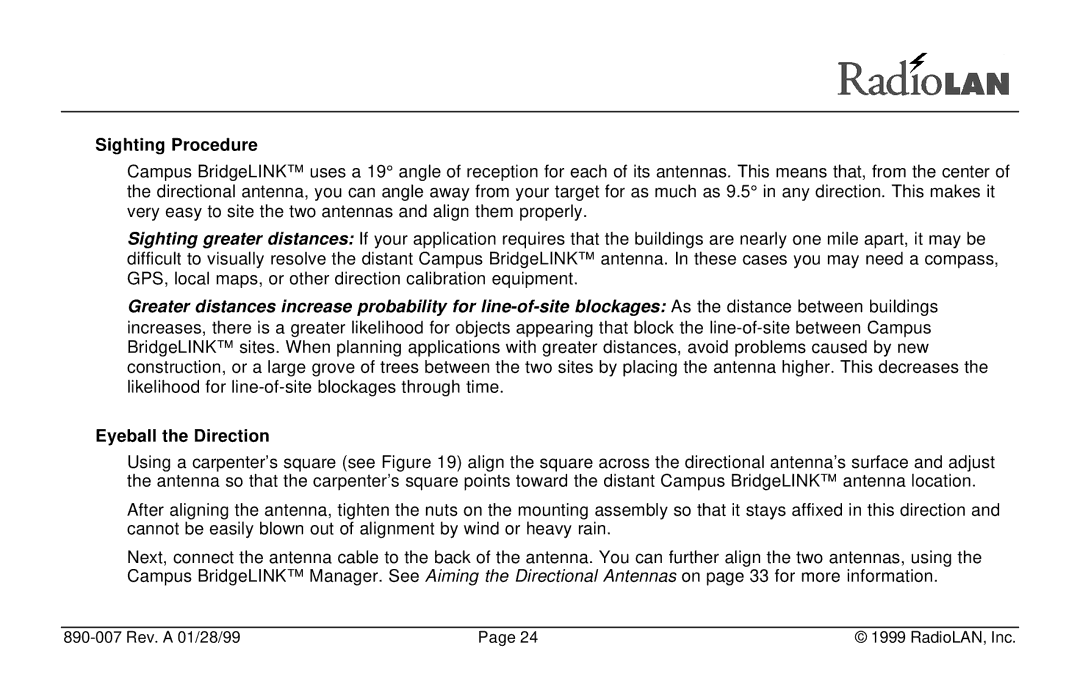
Sighting Procedure
Campus BridgeLINK™ uses a 19° angle of reception for each of its antennas. This means that, from the center of the directional antenna, you can angle away from your target for as much as 9.5° in any direction. This makes it very easy to site the two antennas and align them properly.
Sighting greater distances: If your application requires that the buildings are nearly one mile apart, it may be difficult to visually resolve the distant Campus BridgeLINK™ antenna. In these cases you may need a compass, GPS, local maps, or other direction calibration equipment.
Greater distances increase probability for
Eyeball the Direction
Using a carpenter’s square (see Figure 19) align the square across the directional antenna’s surface and adjust the antenna so that the carpenter’s square points toward the distant Campus BridgeLINK™ antenna location.
After aligning the antenna, tighten the nuts on the mounting assembly so that it stays affixed in this direction and cannot be easily blown out of alignment by wind or heavy rain.
Next, connect the antenna cable to the back of the antenna. You can further align the two antennas, using the Campus BridgeLINK™ Manager. See Aiming the Directional Antennas on page 33 for more information.
| Page 24 | © 1999 RadioLAN, Inc. |
